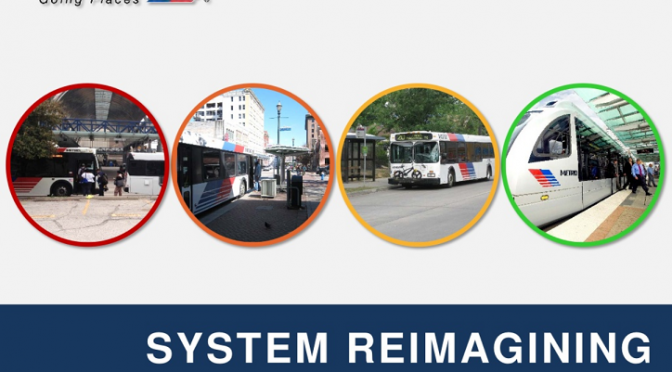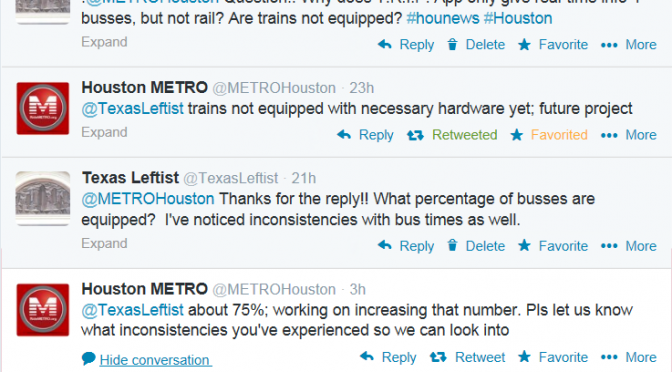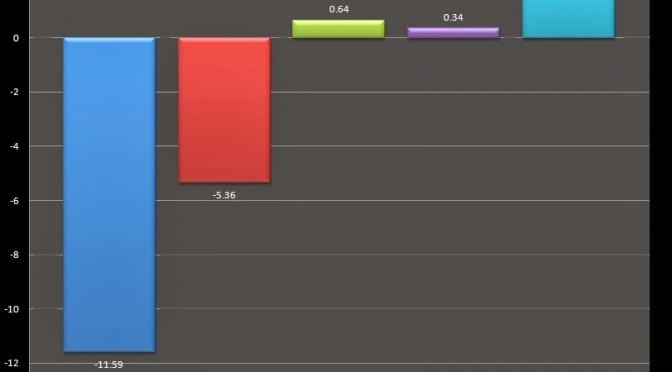
At over 2.2 million residents and over 600 square miles in land area, Houston has the unique distinction of not only being one of the largest cities in the US by population, but also one of the most spread-out cities. This reality can be quite the challenge when trying to plan for the for the …
Continue Reading ›› 
As
noted in a previous post, Houston transit ridership has been experiencing some significant growth over the past year. More residents of the Bayou City have discovered the Mass Transit system, and are using bus services throughout the city. As transit usage grows, so too does the expectation of safe, predictable and …
Continue Reading ›› 
When most Houstonians leave the house to traverse the city, the overwhelming mode of transportation is by car. It shouldn't surprise anyone that most people in the Houston metropolitan area have never even taken public transit. If they have, it was probably in a limited capacity. Houston is the definition of a …
Continue Reading ››
A Voice for the Rest of Texas


